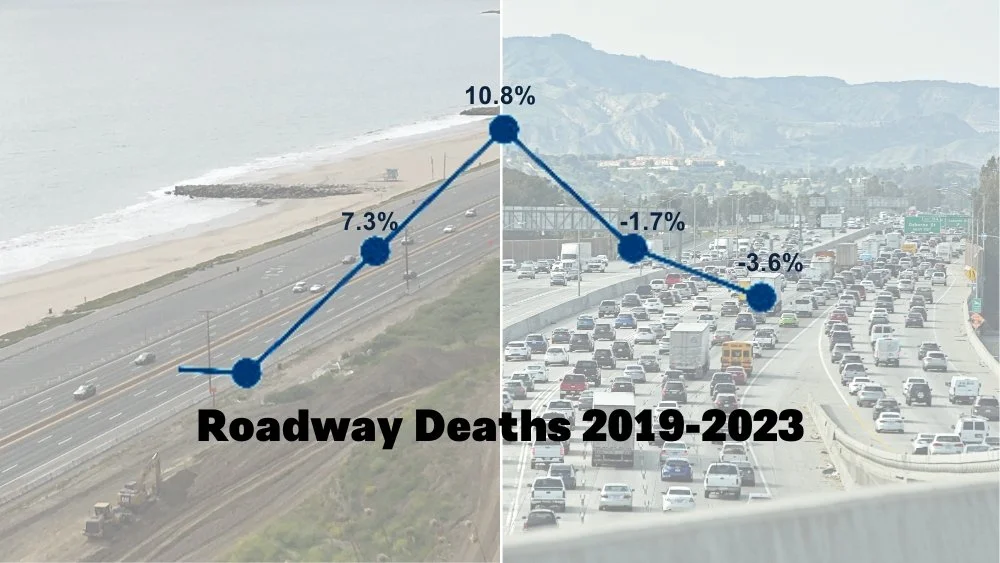In Conversation With an Expert: Tony Tramel on Traffic Engineering's Hopeful Shift
Tony Tramel.
During Tony Tramel’s career and early education (1970s–2010), transportation engineering was regarded as “that phase of engineering that provided for the safe, convenient and efficient movement of persons and goods.” Tramel recalled that even though transportation agencies promoted safe streets, that was rarely the priority when it came to actual design decisions. Tramel is retired now, and has been advocating for safe streets while also serving as the sole proprietor of a consulting firm, which provides transportation engineering and expert witness services. He says that over the years of his experience, he’s seen a hopeful shift in the conversation of transportation engineering.
Now, Tramel will be lending his 40-plus years of expertise to the Crash Analysis Studio, where he will partake in analyzing a crash in Amarillo, Texas, on June 30.
Before the studio, we asked Tramel a couple questions about himself, and the Crash Analysis Studio he is participating in. (The following conversation is edited for clarity).
Can you tell us about your experience as a traffic engineer?
During my career and early education, traffic safety was always a consideration. But in retrospect, as urban traffic engineers, we considered it, but it was balanced between efficiency and convenience. In urban traffic engineering, one of the most pressing issues is reducing commute time for taxpayers. And those results had to be delivered to elected officials. So we would provide lip service and were not proactive in the safety arena.
I remember as a city transportation engineer, I would be called out whenever the police department reported a severe injury or fatal crash. Sometimes I’d need to be at the scene of these crashes, to observe what had happened. The whole experience challenged my thinking, and made me a better traffic engineer.
What have you seen that’s given you hope regarding traffic safety and transportation?
A paradigm shift is happening in traffic safety. We currently are seeing the use of the Safety Systems Approach in some places. We are recognizing that people make mistakes, and our bodies are vulnerable, so the transportation system should be designed and operated to be human centric and accommodate human vulnerabilities. Safety advocates are praising the new National Roadway Safety Strategy, calling it a significant step forward to stem and reverse a troubling upturn in traffic fatalities and serious injuries. This new Strategy by the U.S. Department of Transportation sets a first-ever national goal of zero roadway fatalities and commits to specific actions to advance the goal of safe mobility for all people.
From design standards to a Safe Systems Approach, new ideas are being recognized and implemented. A new generation of designers and transportation engineers will need to continue to make this critical shift from the top at the Federal Highway Administration, to the state departments of transportation, and at the local level.
Is there a project you’ve worked on that gave you hope for the future of our cities?
I was a part of advocating for and implementing the first modern roundabout in the state of Louisiana. Roundabouts are more efficient, convenient, and safer than any other existing traffic control device. Today, I see more and more modern roundabouts have been constructed, and many more are planned.
Is there anything that has stood out to you in the crash you’re analyzing for the Crash Analysis Studio?
This seemed like a very isolated and unique set of circumstances; there is a suggestion of alcohol involvement, but it is not confirmed by the facts provided to date. The upcoming conversation on how the design of the road affects street safety will be interesting.
(Note: In a previous CAS, Strong Towns analyzed a crash that resulted in the death of an intoxicated woman. You can read more about that here: “Is a Drunk Pedestrian Killed by a Driver Something To Care About?”)
What would you say are some of the biggest challenges in our built environment today?
I think that our ability to provide sustainable transportation systems is questionable. Unless we significantly change city policies and urban growth patterns that have been accepted for the past 50 years, it will be very difficult to truly bring about change.





Dr. Jonathan Gingrich is a professor of engineering at Dordt College in Iowa. Unsatisfied with the standard materials for his transportation engineering class, he incorporated safe street design, including having his class conduct a Crash Analysis Studio. He joins today’s episode to talk about how he did this and the benefits it had for his students. (Transcript included.)